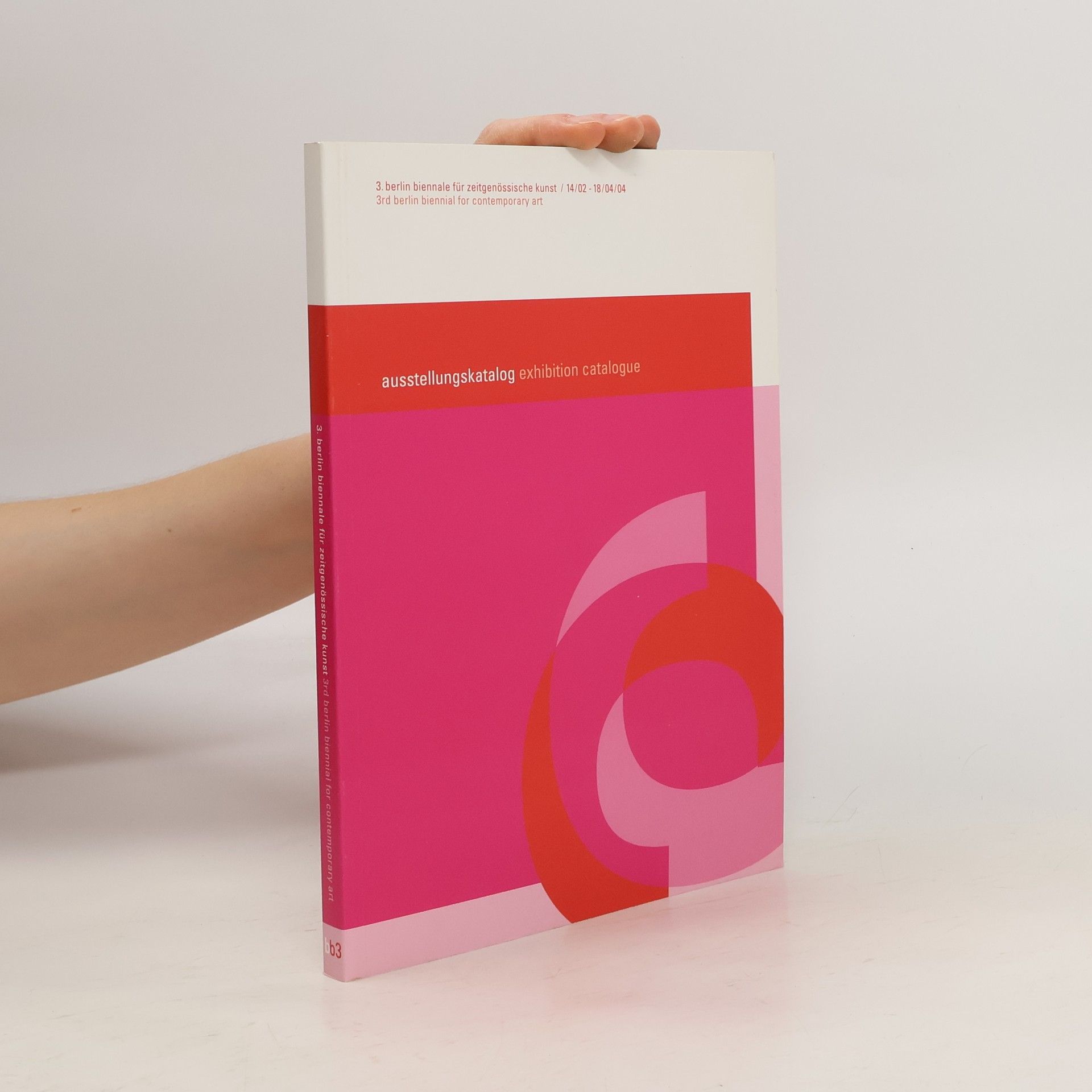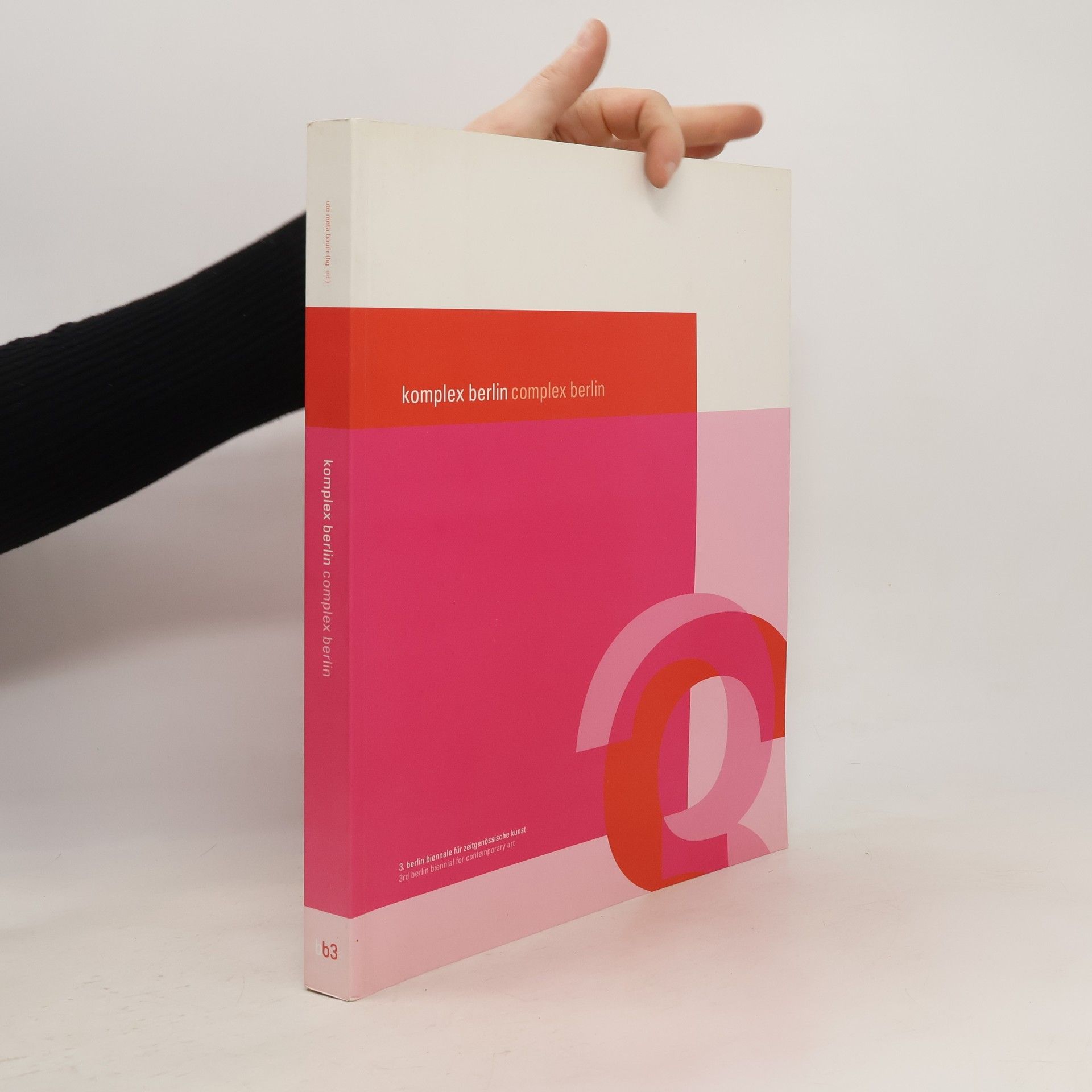Autoren: Ute Meta Bauer, Gabriele Horn, Sönke Gau, Heike Ander, Knut Ebeling, Christiane Erharter, Simon Harvey, Stephan Heidenreich, Andrea Hurton, Anne Karin Jortveit, Gabriele Knapstein, Holger Kube Ventura, Peter Lang, Regina Möller, Mark Nash, Martin Prinzhorn, Dierk Schmidt, Julia Schreiner, Hito Steyerl. Reader zur 3. berlin biennale.
Ute Meta Bauer Knihy


Katalog / 3. Berlin-Biennale für Zeitgenössische Kunst
- 204 stránek
- 8 hodin čtení
Künstler u. a.: fabrics interseason, Florian Hecker, Merzbow/Masami Akita, Ulrike Ottinger, Monica Bonvicini, Maria Eichhorn, Peter Friedl, Thomas Struth, Lisa Roberts, Amelie von Wulffen. Autoren: Ute Meta Bauer, Gabriele Horn, Sönke Gau, Heike Ander, Knut Ebeling, Christiane Erharter, Simon Harvey, Stephan Heidenreich, Andrea Hurton, Anne Karin Jortveit, Gabriele Knapstein, Holger Kube Ventura, Peter Lang, Regina Möller, Mark Nash, Martin Prinzhorn, Dierk Schmidt, Julia Schreiner, Hito Steyerl. Kurzführer mit vollständigen Künstlerbiographien, sowie Autorenbiographien und Verzeichnis der ausgestellten Werke.